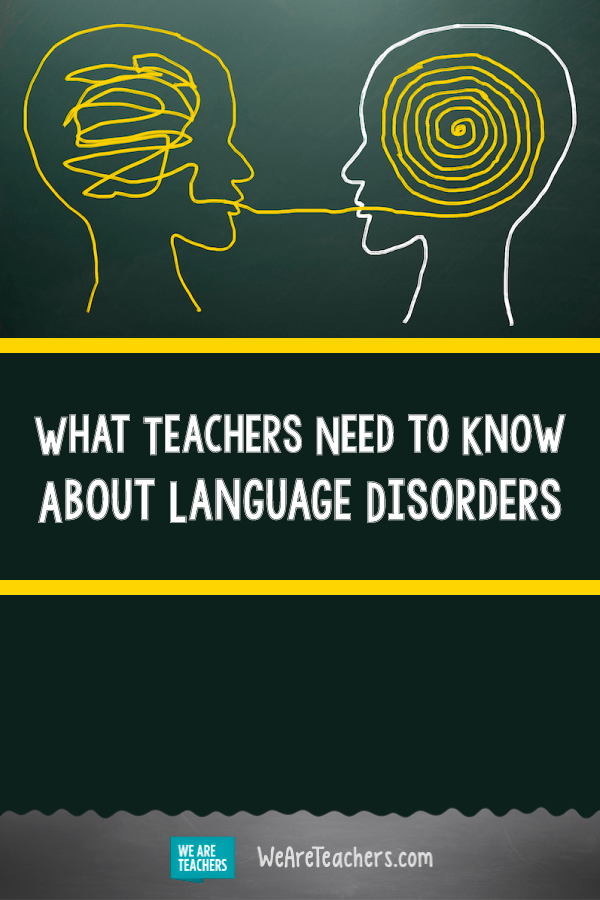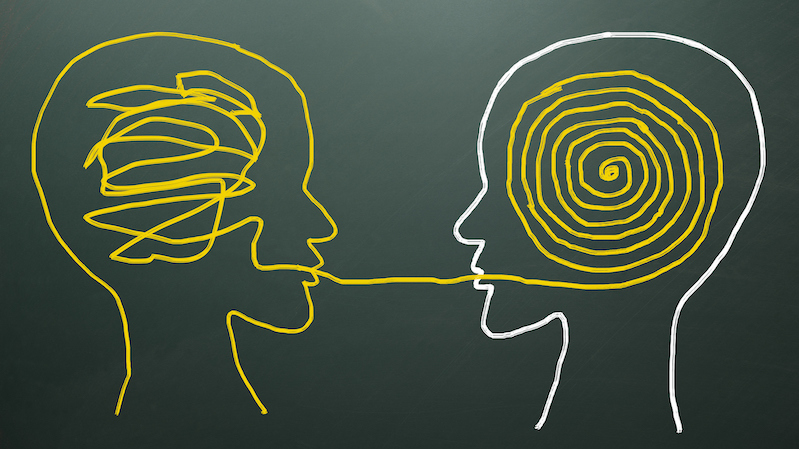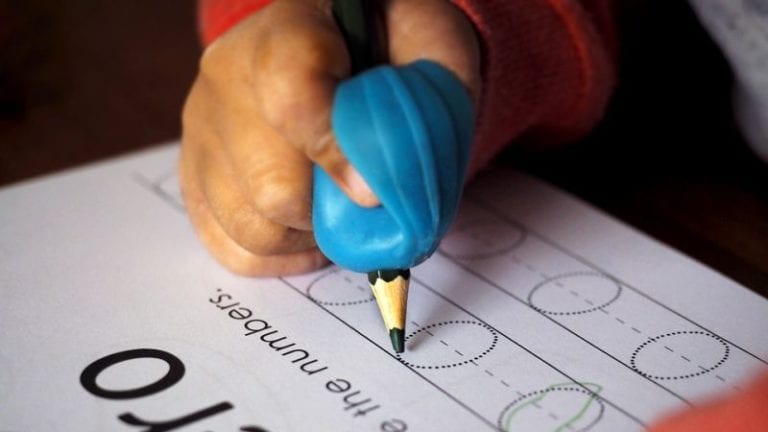Eliza has struggled to understand and be understood since she was very young. In first grade, her teacher noticed she often had trouble following directions and rarely spoke during class. When Eliza did speak up, her sentences were hard to follow and frequently filled with “umms” as she searched for the words she wanted. She had no trouble pronouncing words, but putting together coherent sentences seemed to be a challenge. Her teacher recommended an evaluation by a speech-language pathologist, who diagnosed Eliza with a language disorder.
What are language disorders?
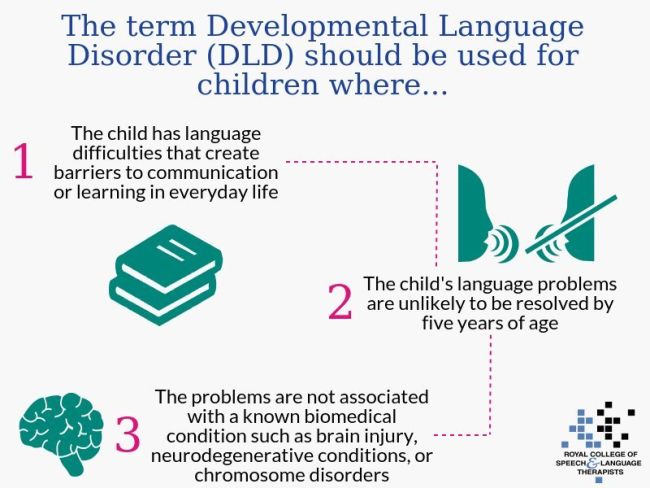
Source: Royal College of Speech & Language Therapists
Language disorders refer to a condition where a person has difficulties learning, using, and/or understanding spoken or written language. They fall under the larger umbrella of communication disorders but are distinctly different from speech disorders, like lisps or stuttering. Children with language disorders don’t have difficulty pronouncing words or sounds themselves. Instead, they struggle to find the words they want and put them together in the correct order or have problems understanding what’s being said to them.
Language disorders are broken into three types:
- Receptive: People with receptive language disorder have problems understanding and processing what others say to them, despite having no hearing problems.
- Expressive: Expressive language disorder causes problems with using words to express thoughts, although the person has no physical problems in pronouncing the words themselves.
- Mixed Receptive-Expressive: Those with this form of language disorder have trouble with both expressing their thoughts in words and understanding what others say to them.
Language disorders can be acquired at any time during life, usually caused by brain injury or illness. For most children, though, language disorders are developmental. The exact causes of developmental language disorders are unknown, though heredity and prenatal nutrition deficiencies are both possible suspects. Children with language disorders may also have related conditions, like autism, dyslexia, ADHD, and mental health issues. They usually have average or above-average intelligence.
[contextly_auto_sidebar]
About five percent of children are believed to have language disorders. That means that in a classroom of 20 students, you’re likely to have at least one who is affected. Early childhood and elementary educators are more likely to encounter undiagnosed language disorders. The condition is treatable but not curable, so teachers of all ages should know what these disorders look like and how to help.
What do language disorders look like?
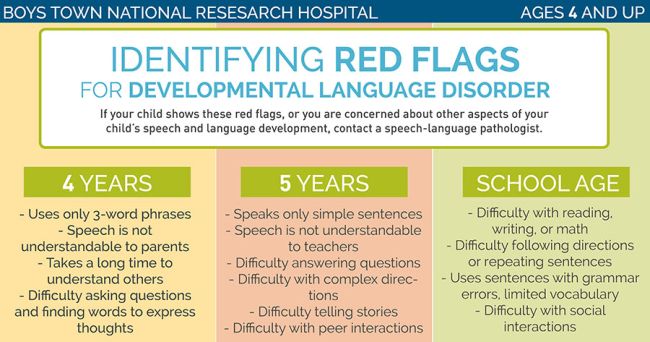
Source: Boys Town National Research Hospital
Expressive language disorder is easier to identify than receptive. Parents usually notice when their child doesn’t begin talking by the age of two. When the child does start talking, their vocabulary is usually much more limited than others their age. Their sentences may be garbled or lacking key words. By school age, expressive language disorder signs may include:
- Using filler words like “um” or “stuff” frequently instead of more specific words
- Having extreme difficulty learning and using new vocabulary
- Using only short basic sentence structures
- Often leaving out pronouns or verbs when talking, creating incoherent sentences
- Seeming frustrated by the inability to express themselves verbally
- Simply giving up and remaining quiet, both in class and with friends
Receptive language disorder can be harder to spot in young kids. By school age, parents and teachers may notice persistent difficulty in following directions. Other signs might include:
- Wandering attention during stories or lessons; tuning out because they can’t really follow what’s happening
- Frequent interruptions on unrelated topics during lessons or casual conversations
- Unrelated answers to questions that indicate they didn’t understand the question itself. For example, the teacher pauses during a lesson on Abraham Lincoln and asks “Where did Lincoln grow up?” The child might answer, “He freed the slaves.”
These disorders are hard to identify definitively without an expert’s opinion. If you suspect a child in your classroom may have a language disorder, speak with the parents or school administrators about a professional evaluation.
Support students with language disorders.
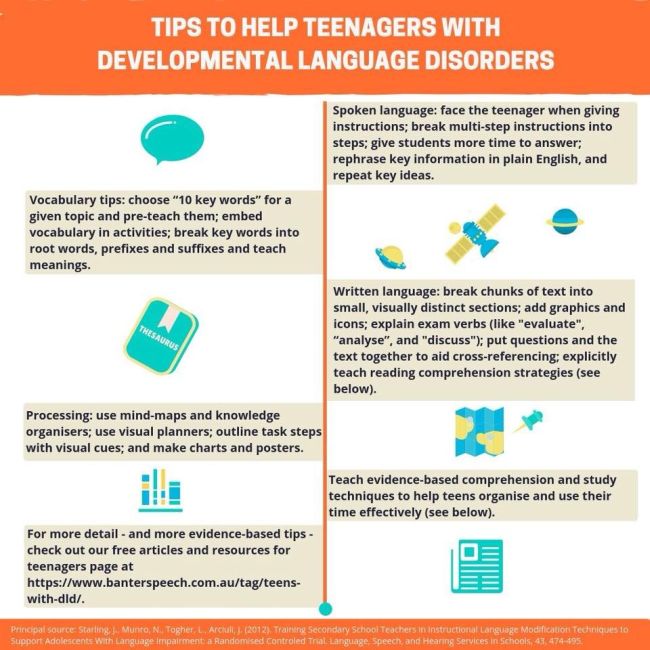
Source: Banter Speech + Language
Kids with language disorders show the most improvement when they start treatment early, preferably by preschool. However, even with effective treatment, school-age kids are likely to continue to need some accommodations to succeed. Students with language disorders may have an IEP/504 plan that specifies accommodations and goals, such as the ones listed here:
Be patient.
These kids need more time to fully understand questions and put their thoughts together before they respond. They may speak slowly or too fast and leave out important words, repeating themselves or using filler. Allow them the time they need, without interrupting or jumping in to provide words or direction. If they stray off topic, gently redirect them and allow them to continue.
Allow them to prepare.
It can be very difficult for kids with language disorders when they’re called on unexpectedly in class. Let them in know in advance you’ll be asking for their thoughts and that they’re welcome to make and refer to notes as needed.
Model behaviors.
It’s important to encourage as much practice with complete sentences as possible for expressive language disorder. If a student responds with a one-word answer, model back a complete correct sentence and ask them to repeat it.
Give directions differently.
Following a set of complicated instructions is often more than those with receptive language issues can handle. After giving instructions to the class as a whole, spend a few minutes one on one with the student going over the directions. Break them down into smaller chunks and encourage the student to write them down or even draw pictures for reference. Make eye contact with the student while talking to be sure you have their attention.
Be direct.
Teachers are usually encouraged to ask open-ended questions of students, but sometimes it’s better to give kids with language disorders a simple choice. Instead of “What do you want to work on now?” ask “Do you want to go the reading station or practice your spelling words?”
Accept silence sometimes.
If class participation or public speaking isn’t necessary for learning the material at hand, don’t require it from students with language disorders. Find other ways to test them on their knowledge of the subject.
Get resources on language disorders.
Online:
- Understanding Language Disorders, Understood.com
- Developmental Language Disorder: The Most Common Childhood Disease You’ve Never Heard Of
- Language Disorders in Children, MedLine Plus
Books:
Just a heads up, WeAreTeachers may collect a share of sales from the links on this page. We only recommend items our team loves!
- Language Disorders from Infancy through Adolescence: Listening, Speaking, Reading, Writing, and Communicating, Fifth Edition (Paul/Norbury/Gosse, 2017)
- Language Disorders in Children: Fundamental Concepts of Assessment and Intervention, Second Edition (Kaderavek, 2014)
Do you have experience dealing with language disorders in the classroom or want to get advice from others who do? Come ask your questions and share your knowledge in our WeAreTeachers HELPLINE Facebook group.
Plus, what teachers need to know about dyspraxia.
